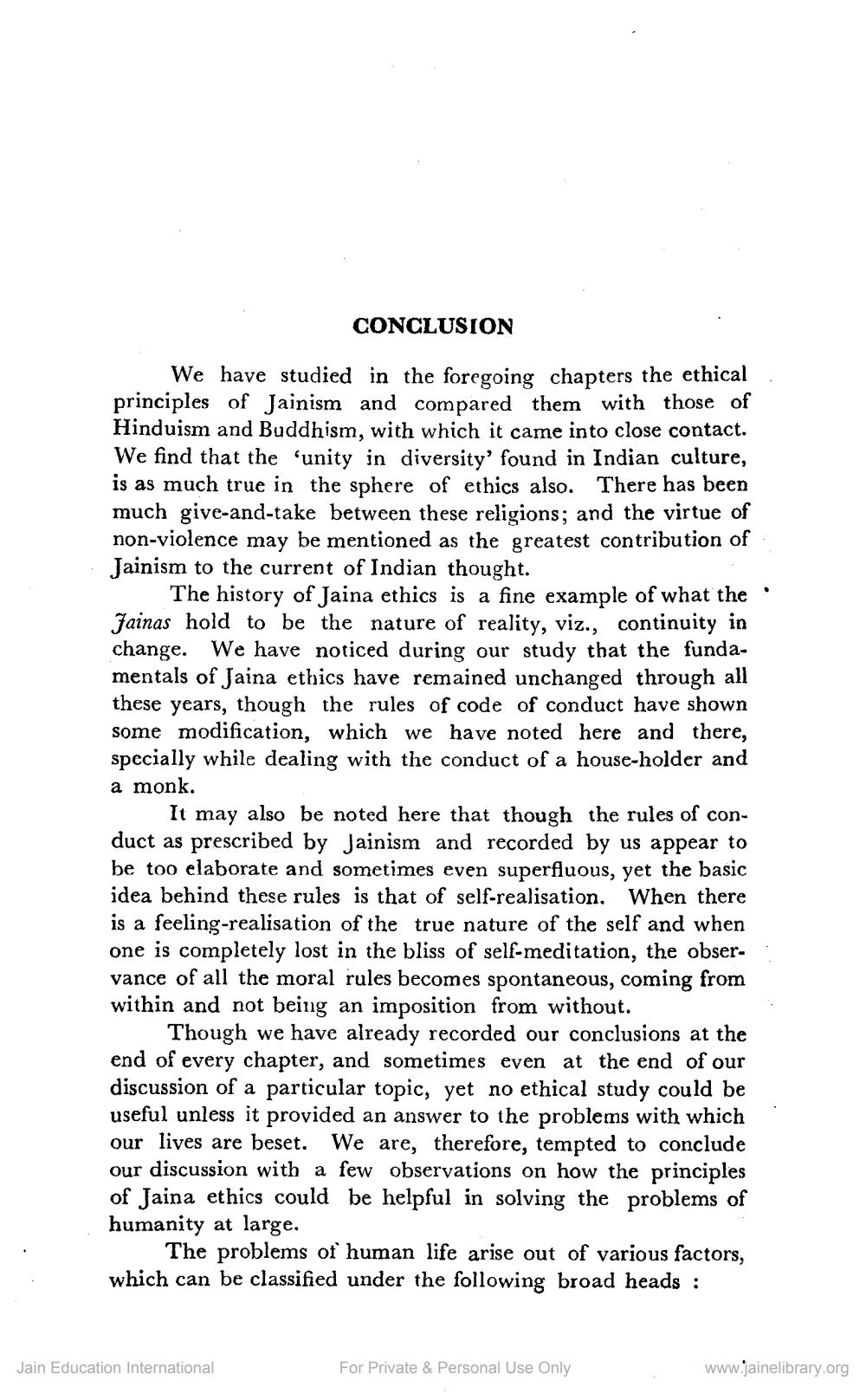________________
CONCLUSION
We have studied in the foregoing chapters the ethical principles of Jainism and compared them with those of Hinduism and Buddhism, with which it came into close contact. We find that the 'unity in diversity' found in Indian culture, is as much true in the sphere of ethics also. There has been much give-and-take between these religions; and the virtue of non-violence may be mentioned as the greatest contribution of Jainism to the current of Indian thought.
The history of Jaina ethics is a fine example of what the Jainas hold to be the nature of reality, viz., continuity in change. We have noticed during our study that the fundamentals of Jaina ethics have remained unchanged through all these years, though the rules of code of conduct have shown some modification, which we have noted here and there, specially while dealing with the conduct of a house-holder and a monk.
It may also be noted here that though the rules of conduct as prescribed by Jainism and recorded by us appear to be too elaborate and sometimes even superfluous, yet the basic idea behind these rules is that of self-realisation. When there is a feeling-realisation of the true nature of the self and when one is completely lost in the bliss of self-meditation, the observance of all the moral rules becomes spontaneous, coming from within and not being an imposition from without.
Though we have already recorded our conclusions at the end of every chapter, and sometimes even at the end of our discussion of a particular topic, yet no ethical study could be useful unless it provided an answer to the problems with which our lives are beset. We are, therefore, tempted to conclude our discussion with a few observations on how the principles of Jaina ethics could be helpful in solving the problems of humanity at large.
The problems of human life arise out of various factors, which can be classified under the following broad heads :
Jain Education International
For Private & Personal Use Only
www.jainelibrary.org




